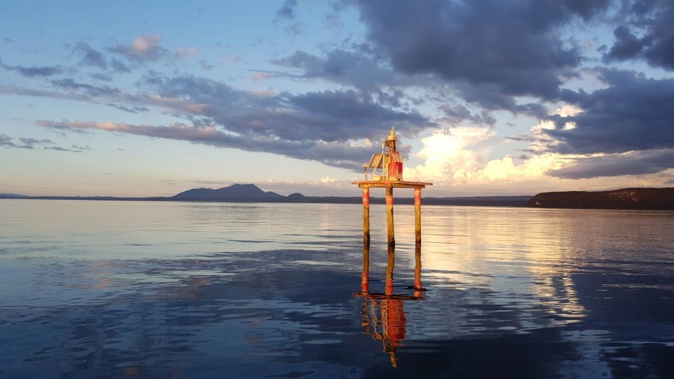
New Zealand’s best-known supervolcano hasn’t quietened, with scientists still recording around 20 local earthquakes at Taupō each week.
Yet there’s no indication that the enormous, lake-filled caldera volcano - where GeoNet’s alert level was raised to one for the first time ever in September – is at any immediate risk of eruption.
A local sequence of earthquakes that began in May has now generated more than 750 tremors: among them, a 4.2 event and several slightly smaller ones recorded within days of each other in mid-September.
The largest cluster was located around the central and eastern part of the lake, at depths of about 4km to 13km, where scientists have also been observing centimetres of ongoing ground uplift.
Last Thursday, about 40 people reported feeling a 3.5 quake, while before that, on November 4, GeoNet instruments picked up a 3.6 event.
GeoNet duty volcano officer Paul Jarvis said that, compared with before May, they were still seeing an elevated number of quakes each week.
"The precise numbers can be variable; from June to September, there were about 30 to 40 events per week whilst in the last couple of weeks the value has been about 20."
Throughout the ongoing unrest period, these quakes had consistently been recorded around the eastern and northern half of the lake.
As well, ground deformation at Horomatangi reefs – where scientists recently located a hidden magma chamber, thought to sit about 5km below ground – has continued at a vertical rate of about 60mm a year.
/cloudfront-ap-southeast-2.images.arcpublishing.com/nzme/UNEIE76MKGJYWIXKNCH74ZXD2E.jpg)
A local sequence of earthquakes that began in May has now generated nearly 750 tremors: among them, a 4.2 event and several slightly smaller ones recorded within days of each other in mid-September. Image / GeoNet
It's thought the latest episode is a result of magma moving around within it and jostling for space, possibly because of new magma coming up from below.
"By changing the pressure inside the volcano, these processes may also cause some movement along the local faults and some broad deformation that we detected with our GNSS [GPS] network," Jarvis said.
Lake levelling surveys carried out in June and October also confirmed that uplift at the surface was occurring with the fresh activity.
"Such complex unrest is common at caldera volcanoes around the world."
While the unrest was minor, that it was continuing meant GeoNet was keeping Taupō's Volcanic Alert Level at one.
"There have been some fluctuations, for example in the weekly number of earthquakes, but no strong decline or increase," he said.
"Previous unrest episodes at Taupō have lasted from a few days to up to three years, although the average duration is around five months.
"If there is a reduction in earthquake and ground deformation activity, our volcano experts will typically take some time - at least weeks but possibly a month or more - to confirm that this reduction represents the end of unrest rather than just a pause, and then the VAL will return to level zero."
Scientists were working to develop a range of possible future scenarios for Taupō – and an actual eruption remained a decidedly unlikely one.
/cloudfront-ap-southeast-2.images.arcpublishing.com/nzme/KXE4JAP56JQC6KV63BBUTAISXM.jpg)
Source / GeoNet
Trying to predict what was likely to happen next remained challenging, given they could only refer to two events – 2008 and 2019 – with comparable levels of monitoring.
Of 17 episodes in the past 150 years, none have ended with a big event.
One 2020 modelling study put the annual probability of a Taupō eruption at any size at a very low chance of one in 800 – or at between 0.5 and 1.3 per cent - within the next 500 years.
Nonetheless, the volcano was ever-capable of generating enormous events, as it's done throughout its 300,000-year eruptive history.
Lake Taupō itself essentially fills the hole left by one of these - the gigantic Oruanui eruption around 25,400 years ago, in which more than 1100 cubic kilometres of pumice and ash was spewed into the planet's atmosphere.
Since then, there have been about 28 smaller ones we know of: the most recent being the Hatepe eruption 1800 years ago, which was still big enough to obliterate the surrounding landscape.
Take your Radio, Podcasts and Music with you









